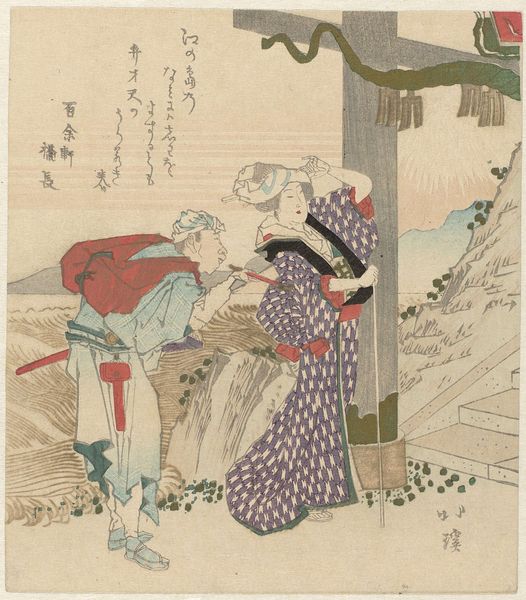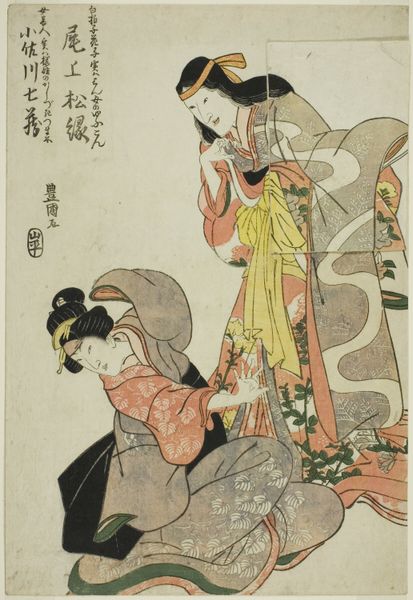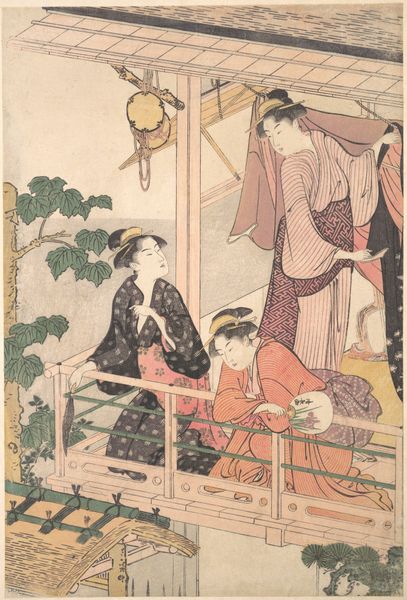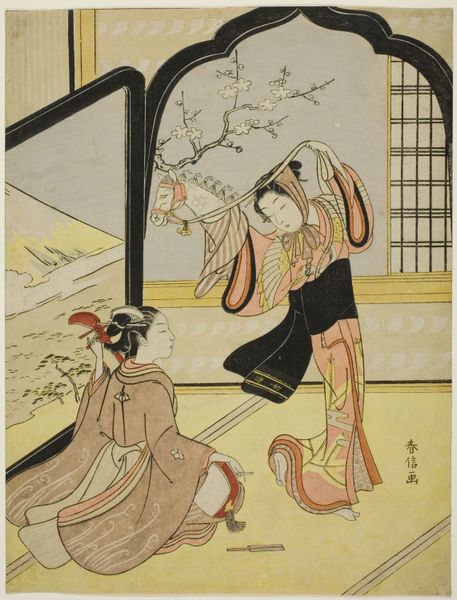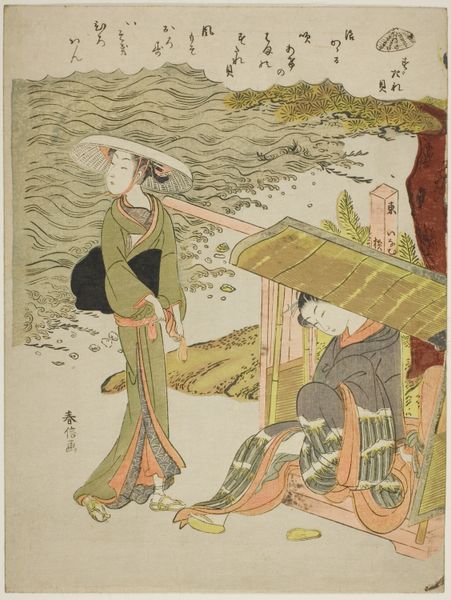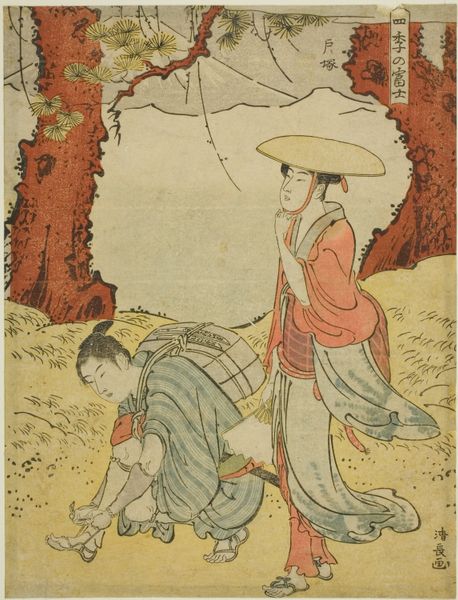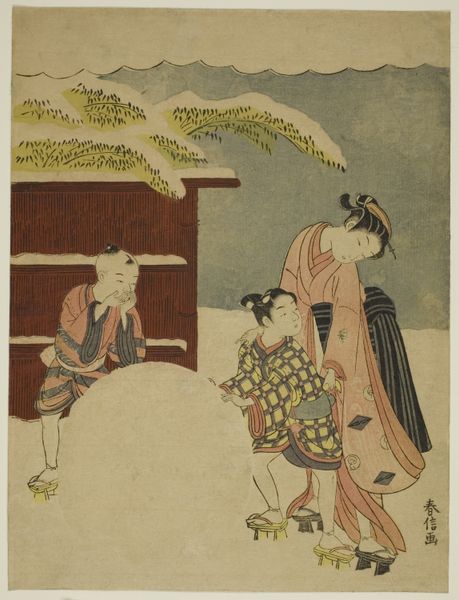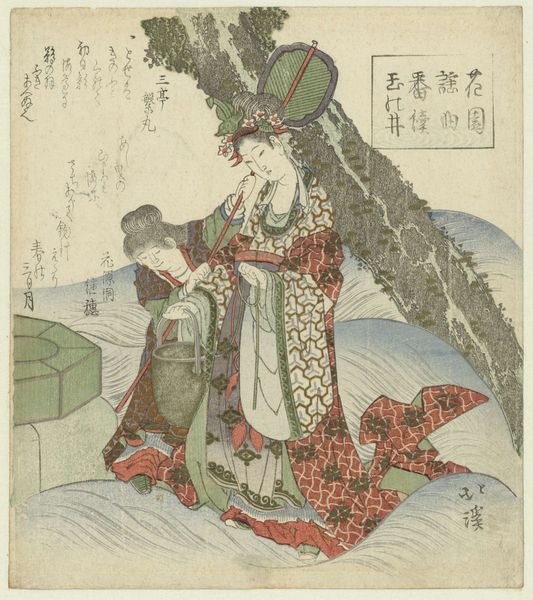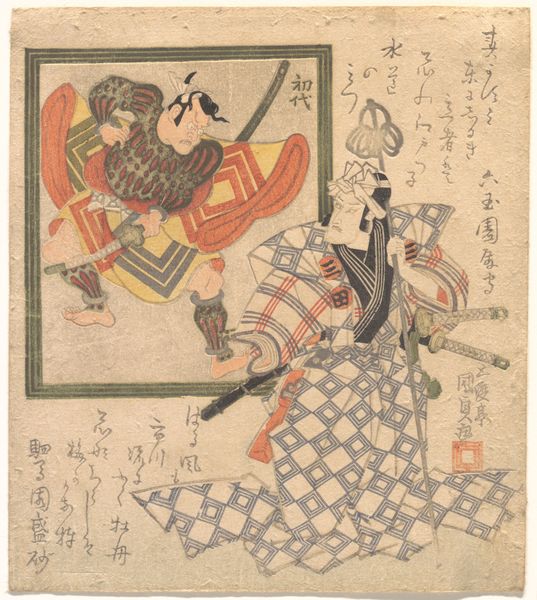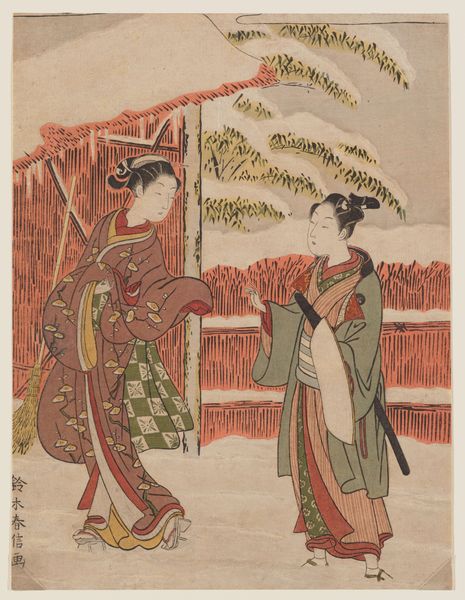
Dimensions: 8 1/4 x 6 11/16 in. (21 x 17 cm) (image, sheet)
Copyright: Public Domain
Curator: This is an intriguing woodblock print titled "Woman and Man at Entrance Gate of Enoshima," created around 1900. It's currently held here at the Minneapolis Institute of Art. The composition immediately pulls you in. Editor: It does! I’m struck by the figures. The patterns in the woman's kimono almost vibrate, creating an interesting tension against the landscape’s soft hues. It is clearly a figuration, but it could easily pass for abstract. The flat planes are mesmerizing. Curator: Let’s consider the production itself. These ukiyo-e prints involved a collaboration of artisans. We have the artist’s design, but also the woodblock carvers who transferred the image and the printers responsible for layering colors. Think of the material knowledge embedded in those processes. The paper, the inks, the pressure applied. Editor: Absolutely. The socio-economic aspect is significant. Ukiyo-e prints were originally accessible to a broad public, fueling demand for images depicting popular culture: actors, courtesans, landscapes, all subjects carefully regulated, consumed, and given meaning by the audiences of the day. Consider what that regulation did for or against creativity, for example. Curator: And think of the resources needed. Pigments were derived from mineral sources or plants and dyes that had to be refined before their incorporation into a medium. Then you're adding the social dimensions and the impact of this on the reception and exchange of cultural capital during that historical period, especially regarding the popular fascination with ‘orientalism’ at the time. Editor: Precisely. That 'orientalism' is crucial here. It points to a western gaze shaping perceptions of Japan. And the figures – are they actors? Are they average locals? We look at the woman whose gestures could be interpreted in countless ways depending on the period. The artist used this piece to shape that consumption as well as expose his own experience, and the museum uses that legacy now for public education and consumption. Curator: A vital reminder to not view this artwork in a vacuum. To fully engage is to study production, understand reception and ask who is profiting, and how, from the representation and interpretation of labor that helped make it possible. Editor: Right, it becomes a multilayered investigation. A moment captured but reshaped through commerce, perception and display in the here and now. Curator: Agreed. This piece keeps urging to unravel even its simpler features by pointing toward complex issues like access and economy that were so tightly embedded into both its creation and viewership, and continue to remain relevant today. Editor: It's definitely more than a pretty print; it prompts important inquiries about art's purpose in society and for whom art exists.
Comments
minneapolisinstituteofart almost 2 years ago
⋮
In this print, a man and a woman are shown standing before the stone gateway (torii) leading to the Shinto shrine on the promontory of Enoshima. Judging from the pack on the man's back and the woman's fashionable attire, including her ageb'shi headdress to protect her elaborate coiffure, we can presume that they are travelers from the nearby city of Edo. The geometric pattern of the woman's kimono is called yagasuri, a kind of ikat weaving that produces the distinctive arrow-feather (ya) design. This pattern was preferred by women of the warrior class and was adopted for the uniforms worn by the maidservants at Shogun's Court. By the 19th century, in line with a fashion taste for simplicity, this particular ikat pattern became popular among the city women of the merchant class. Meiji-period reproduction.
Join the conversation
Join millions of artists and users on Artera today and experience the ultimate creative platform.
